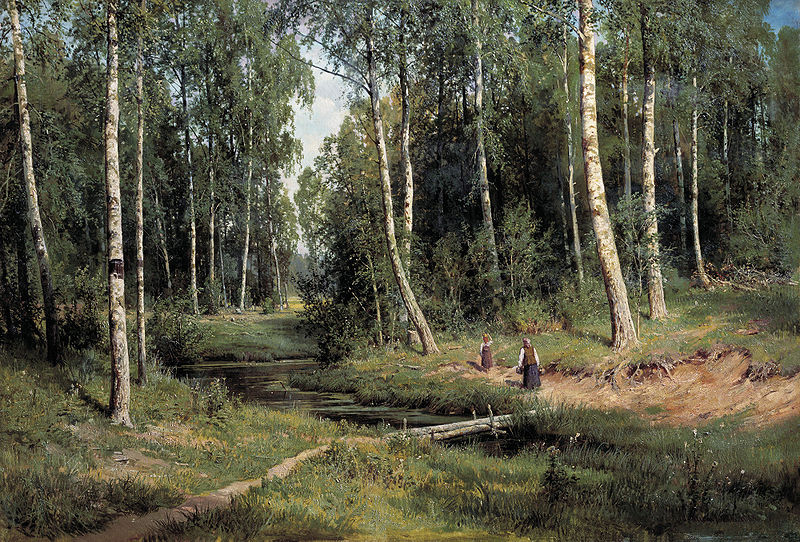
Biography
Ivan Ivanovich Shishkin is a Russian landscape painter born in Yelabuga, Vyatka province. From his childhood, the painter was interested in art and literature. Being a student at the St. Petersburg Academy of Arts, Ivan Shishkin was awarded the Academy’s Gold Medal and got the stipend to travel to the world art capitals, including Munich, Prague, and Düsseldorf. After he visited Düsseldorf School, the artist was inspired to reproduce in his artworks pristine nature and linear severity. Besides, the painter became the innovator in Russia mastering such techniques as etching and lithography. Later, Ivan Shishkin started to work with the studio of Ivan Kramskoy in St. Petersburg where his artistic approach was warmly welcomed.
Key Ideas in painting
Through all his paintings, Ivan Shishkin seeks to convey the idea that nature is the universe where one may find own peace and harmony. The artist tries to persuade individuals to truly love nature in order to find a balance in life. Even more, because of his unique style, Ivan Shishkin became known as “tsar of the woods.” One more primary idea of the artist’s drawings is to depict not only a concrete place, but render the image and spirit of Russian landscapes.
Arts made by Ivan Shishkin
The unique feature of all his famous paintings is that natural landscapes are depicted in their pristine state. This peculiar characteristic may be traced in such artworks as The Forest Clearing (1896), Winter (1890), The Field of Wheat (1878), In the Wild North (1891), and The Teutoburg Forest (1865). Other drawings such as Promenading in the Forest (1869), In The Birch Tree Forest (1883), The Path through the Woods (1880), and Rain in the Oak Forest (1891), depict human beings in harmony with nature.
 The Forest Clearing (1896)
The Forest Clearing (1896)
In the painting, one may see a so-called forest “interior.” The slim trees become the walls, while the floor is presented by a meadow with grass and flowers. The sky is almost invisible because of dense woods.
 Winter(1890)
Winter(1890)
One look at the painting and one may feel the beauty of winter days, their calmness, and peacefulness. At the same time, the painting renders the festive and solemn atmosphere of the winter season. In the front, one may see a snowy wooded meadow in the middle of nowhere.
 The Field of Wheat (1878)
The Field of Wheat (1878)
The famous painting The Field of Wheat depicts age-old pine trees in the front of a pale blue sky. The golden field of wheat ready to harvest adds a peculiar charm to the landscape. In the front of the drawing, one may see the beginning of a winding field road. The road disappears into a distance and symbolizes eternity and bliss.
 In The Birch Tree Forest (1883)
In The Birch Tree Forest (1883)
This painting is full of light and natural beauty. Ivan Shishkin managed to catch a perfect moment, feeling the rhythm and spirit of nature. Looking at In The Birch Tree Forest, one may see a calm stream in the forest with a wooden bridge. The trees in the painting seem to be so big and tremendous that two human figures on the path near the stream look like little buggies. Besides, a variety of shadows and lights create the feeling of solitude, warmness, and calmness.
 In The Wild North (1891)
In The Wild North (1891)
This drawing was inspired by the famous Lermontov’s poem. As well as in the poem, the leading theme of the painting is loneliness and abandonment. In the middle of a cold landscape, on the bare top of a rock, rises a proud and lonely tree. In the background, one may see boundless, snow-covered forests. With the help of rich colors and shadows, the painter succeeded to render the feeling of cold silence and solitude.





